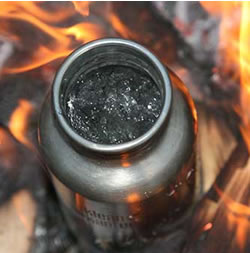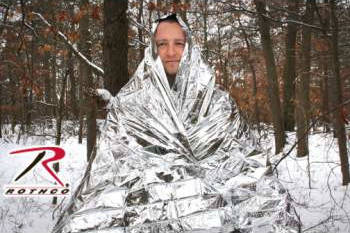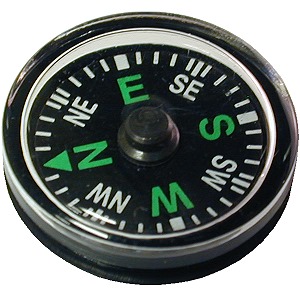Bug Out Bag Components
Remembering that the purpose of a bug out bag is to get you from point A to point B, for example from work to home, you first need to consider how long you’ll likely need to rely solely on the contents of your bag. If you end up on foot, probably at least a day or two, possibly longer. Weight is a consideration as well. For this post, we’ll look at items you might consider keeping in your bug out bag.
Food
Food is energy. It is the fuel for your body. Without it, you can survive a while but your body will soon start to suffer. Your mental faculties will diminish. You’ll slow down. Your reaction times will be greatly reduced. You’ll need to have food in your bug out bag if you’re going to make it to your destination.
You want food that takes little to no preparation before eating. Further, you want things that have concentrated calories, now’s not the time to worry about your diet. The more calories, the better as the calories are what provide the energy. Canned goods are, for the most part, a bad idea due to both weight and storage considerations. If you’ll be keeping your bug out bag in your vehicle, it will likely be susceptible to temperature extremes of both heat and cold.
Here are just a few suggestions for food to store in your bug out bag.
- Granola bars
- Protein or energy bars
- Hard candy
- Dried nuts and fruit
- Crackers and peanut butter
I tend to shy away from the military MREs (Meals Ready to Eat) because of the weight and size. They are a great thing to have if you feel justified in carrying them around.
Dehydrated meals like Wise Company are also not a bad idea but again you're dealing with the size of the package as well as the need to add hot water to them to make them edible. Plus, they are pricey.

A step up from the basic, no-cook foods listed earlier, you might consider adding a package or two of ramen noodles as well as a small mess kit (found in most sporting goods departments). With the mess kit, you’ll have the ability to heat food, which increases your options dramatically. A few bouillion cubes take up almost no space. Consider adding to your bag a few envelopes of hot cocoa mix, instant coffee, tea bags, or drink mix. Not only do those make treated water more palatable, having something hot to drink can calm nerves. A sierra cup can be a godsend with heating drinks so you might consider adding one of those to your kit as well.
Finally, add in a few condiment items to make found food a bit tastier. Salt, pepper, perhaps other certain spices you particularly like. Hot sauce, ketchup, and mustard are all readily available in packet form from various fast food restaurants. Don’t forget eating utensils as well.
What food items do you have in your bug out bags?
Water
Water is life. You can last weeks without food but only a few days at best without water. But, water is heavy and it is almost impossible to carry much of it around with you in a bug out situation. Thus, you have two things to keep in your bug out bag. Some amount of water for immediate use and the means to purify more when you find it.

The average person could probably carry a couple of liters of water fairly easily. You can find aluminum water bottles fairly inexpensively at almost any discount store today. They are light and relatively sturdy. While you could just as easily use a few old plastic soda bottles, the aluminum ones will withstand more abuse. Don’t fill them all the way to the top as in winter climates they may freeze. Leave an inch or two of expansion space. Be sure they seal tight so they won’t leak in your bag. I advise you to have at least two separate water bottles, at the minimum. One for drinking and one to use when purifying found water.
As for purification supplies, we previously discussed DIY methods of water purification. Boiling is best if you have the time and the fuel to do so. This is another time that mess kit would come in handy as the pot in the kit can be used to boil water. However, be sure to include alternate means of purification. A filter straw is a great little device for doing so. They are light and work well. A step up would be a small Berkey water filter set up. But, those take up more space so keep that in mind. Water purification tablets, when used properly, are great to have on hand. I don't recommend storing a small bottle of bleach for a couple of reasons. First, if the container leaks, it can ruin other supplies in your bag. Second, once the original container of bleach is opened, it degrades quickly. Within just a few months, that little bottle of bleach in your kit will be nothing more than salt and water.
Fire
The means to build a small campfire is vitally important. Fire will keep you warm as well as heat your food. It also has something of a calming effect, especially at night. As a species, humans tend to fear the dark. A crackling fire will go a long way to making you more at ease.
Note that building a good fire is as much art as it is a skill. It takes practice. Get outside and bone up on these skills. It is something you’ll learn as much by trial and error as any other way.

For supplies in your bug out bag, have at least three different ways to light a fire.
- Butane lighters
- Flint and steel
- Waterproof matches
- Magnifying lens
- 9 volt battery and fine steel wool (ignore the audio track)
Keep some form of tinder in a plastic bag for when you are unable to locate a suitable natural source. You can make homemade fire starters using dryer lint, cardboard egg cartons, and paraffin wax. Simply stuff each compartment in the egg carton with the lint, then pour melted paraffin over it to seal each compartment. Cut them apart and keep them in a zip-lock plastic bag until you need them. When ready to use, just light the corner of the cardboard and it will burn for a fairly long time. You can also buy premade tinder "tabs" that serve the same purpose. Another item worth considering is fire sticks. These are pressed wood treated with chemicals, often with a "head" that lights easily and quickly. They are small and lightweight, burn a long time, and are great for starting campfires.
An easy way to build a campfire is the teepee method. Take sticks about as big around as a man’s finger and about a foot long and make a teepee with them. Leave a small opening on one side and place your tinder inside. Light the tinder and let it burn to catch the larger twigs alight. As it collapses from its own weight, gradually add larger sticks. Again, it takes practice to make a decent fire. Don't wait until you're shivering in the cold to make your first fire. Also, make sure the ground is clear under and around where you're building your fire. Starting the whole woods aflame isn't going to help your situation at all.
Navigation
Just as important as knowing where you're going is how you'll get there. Whether traveling by vehicle or foot, you have to be able to plan out and follow a route to your bug out location. You should have multiple routes planned ahead of time, to help mitigate any sudden changes in the plan.
If you end up getting off track of your chosen route(s), you'll need ways to keep you headed in the right direction. Many people, especially experienced travelers, tend to develop a pretty good sense of compass direction. That's all well and good but you should have something of a more empirical nature to verify the direction of travel. Stress can bring confusion and a bug out situation is not a great time to get befuddled.
A good compass, and the skill to use it, will be invaluable. They aren't all that expensive and could be worth their weight in gold. Of course, not only do you need to know how a compass works but also which direction you need to travel to get from where you are to where you want to be.
This is where good-quality maps come in. With the advent of reasonably affordable GPS systems and the various and sundry online mapping websites, many people have seemingly forgotten basic map reading skills. There are many sources of inexpensive maps, including your local Department of Transportation and Department of Natural Resources.
You're going to want both highway and topographical maps. Get them for your local area, the area in which you work, and the area of your bug out location (including all areas in between those three places). Practice now plotting out routes then driving them, using just the map and compass. Learn (or relearn) how things look on the map compared to real life. Take detours from your route, then figure out where you are on the map.
Keep the maps and compass in your bug out bag so you have them when you need them. Periodically, travel the routes you've planned for bugging out, make sure things haven't changed. Travel them at night on occasion, as landmarks often look very different in the dark. Above all, don't just plot out the routes and hope for the best. Get out on the road and get some pavement under your tires (or dirt under your boots as the case may be).
Shelter
If you end up bugging out with a vehicle, obviously that might serve as your shelter if need be. However, you might end up on foot or for some other reason your vehicle might not be serviceable for an emergency shelter. For those reasons, have in your bug out bag the means to fashion an expedient shelter from the elements.
Your first line of defense is clothing. Always try to wear season-appropriate clothing, including outerwear. In addition, have spare clothes in your bug out bag. Having clean and dry socks is not only a great mental boost but necessary in inclement weather. Clean and dry underwear can do wonders for your mental state as well. Packing one complete set of spare clothing doesn't take up too much space if you compress it all down in a plastic bag, which also serves to keep it all dry.
Don't forget to keep a pair of good walking boots or shoes with your bug out bag. They needn't be packed in the bag as the first chance you get, you should put them on.

Adding one or two "space blankets" will give you another layer of warmth. If you purchase these great little inexpensive items, be sure to take them out of the package and unfold them, then refold and repack. Otherwise, they have a tendency to wear very thin along the original folds and you may end up with nothing more than shiny ribbons when you truly need the blankets.
As to expedient shelters in the field, all but the harshest terrains offer at least some sort of protection from the elements. Think back to when you were a kid, did you ever build a fort? A simple lean-to can be fashioned from branches and covered with leaves. Not great, but it’ll keep you out of the worst of the wind and rain.
Keeping a small tarp as well as a few dozen feet of paracord in your bug out bag will serve you well if you find you need to fashion a makeshift tent.
Simply run the cord between two trees and drape the tarp on the cord, weighing the ends down with rocks. Again, not great but it’ll do.
Get out in the field now and practice putting together shelters like these. Learn from your mistakes now, rather than when it will truly matter.


